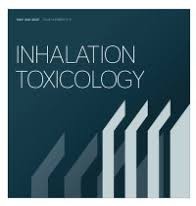Inhalation toxicology might not be the flashiest area of science, but it quietly underpins some of the most important safety advances in public health and medicine. Every breath we take exposes us to a cocktail of particles, chemicals and biological agents. Understanding how these substances interact with the delicate tissues of the respiratory system is crucial for protecting people in everyday life, in healthcare settings and across industry.
Why Inhalation Toxicology Matters
Respiratory health is central to wellbeing, so monitoring airborne risks is essential. Inhalation toxicology examines the impact of inhaled substances on the lungs and wider body. These substances can be natural, such as pollen or mould spores, or completely human made, ranging from industrial fumes and household cleaning products to pharmaceuticals designed for inhalation.
Historically, people working in manufacturing, mining or chemical processing suffered health problems due to long term exposure to airborne hazards. Thankfully, advancements in the field now allow experts to detect dangers earlier, regulate exposure levels and develop safer materials and technologies.
From Industry to Healthcare
Inhalation toxicology is not only about identifying risks. It also plays a vital role in modern medicine. Many breakthrough treatments rely on delivery directly to the lungs. Inhalers for asthma, nebulised therapies for chronic respiratory conditions and cutting-edge inhaled vaccines all require thorough assessment to ensure they are both effective and safe. Researchers need to know exactly how particles behave once they enter the respiratory tract, whether they trigger inflammation and how quickly they break down or disperse.
This science supports pharmaceutical innovation by enabling companies to test the efficacy of inhaled products. Through sophisticated modelling and laboratory studies, toxicologists can predict how inhaled compounds will act in the human body, long before they ever reach a patient.
Advanced Models and Ethical Progress
Traditionally, inhalation toxicity research relied heavily on animal models. Today, ethical considerations and scientific progress have sparked a shift towards more advanced alternatives. Human cell based systems and organ on chip platforms can mimic the structure and function of the lung far more accurately than animals in many cases. These models allow scientists to observe cellular responses in real time, from inflammation and immune activation to tissue repair.
Not only does this approach reduce reliance on animal testing, but it also generates data that often translates more reliably to human biology. Regulators are increasingly recognising the value of these technologies, which is helping accelerate safer product development across industries.
Protecting Society from Modern Air Threats
It is not just pharmaceuticals and industrial materials that fall under the umbrella of inhalation toxicology. Urban air pollution, wildfire smoke, airborne pathogens and even vaping products are areas of urgent research. As cities grow and climate change continues to influence air quality and disease spread, understanding inhaled exposures has never been more important.
Studies in this field inform public health guidelines, workplace safety standards and environmental policies. By uncovering the mechanisms by which airborne hazards cause harm, scientists can influence legislation, support innovation in clean technologies and help individuals make safer lifestyle choices.
Breathing Easier into The Future
Inhalation toxicology is quietly shaping a safer world. From life-saving medicines to cleaner working environments and healthier cities, the discipline ensures that every breath counts for the better. As research methods continue to evolve, we can expect even greater precision in predicting risks and developing safe, effective inhaled therapies. The ultimate outcome is simple: fewer illnesses, stronger respiratory health and a future where science helps everyone breathe a little easier.



Be First to Comment